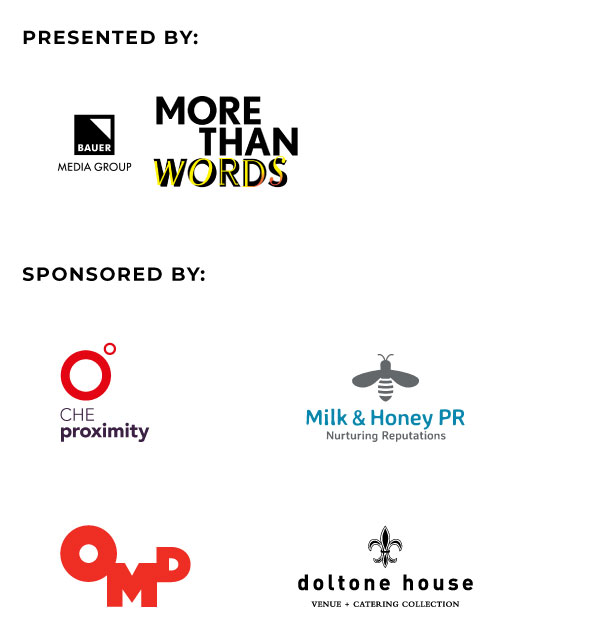Australian Radio Network’s Deborah Clay believes the coronavirus pandemic has opened-up conversations on how society can more evenly distribute the role of unpaid work in homes.
During this year’s B&T Women in Media Awards, presented by Bauer Media, we’ll be recognising exceptional people who have achieved success in their professional arenas, celebrating their invaluable contribution to their industry through leadership, innovation and courage.
Deborah Clay is a 2018 Women in Media Awards winner of the ‘Journalist/Producer’ prize, and holds the titles of news director, commentator, journalist, presenter, and charity ambassador.
Recently, B&T had the pleasure to speak with Clay about what her life looks like in unprecedented times, and had the chance to hear, from her unique perspective, insights on how the COVID-19 pandemic has brought into focus the role of unpaid work in homes.
B&T: Deborah, what does your average day look like?
My day often involves monitoring breakfast news, meetings and presenting drive news. Across the network our news has a tailored and evolving strategy for each of the ten ARN stations; from KIIS 1065, Gold 104.3 and 96FM (on the FM band) to 4KQ 693 and Cruise 1323 (AM stations).
Our brands have specific target audiences and we have received feedback across the board during the coronavirus pandemic, our listeners want to be kept up to date with the very latest to ensure they can feel safe and keep moving through the new “normal” and hear about optimistic stories too.
Our news team has shown incredible resilience while sharing stories about how the virus has impacted people in their city, nationally and globally like the heartbreaking health outcomes we’ve seen and the economic harm.
The majority of journalists have continued to broadcast from the studios and some have worked from home; either way the coverage has been anchored upon the foundation of accuracy and unbiased reporting.
What drives you?
A passion for chasing the news and encouraging journalists.
Deborah, is there a difference between being ‘brave’ and being ‘courageous’?
For me bravery involves facing a situation where there’s a chance you won’t nail it as hoped, or worse still, fail.
When the fear of failure starts to pervade the thought process for long enough, it can slow the organic career process of receiving feedback and the growth associated with taking it onboard.
With a couple of teaspoons of bravery in the cup, possibility is yours. Courage is often an act of the heart and soul and has a place when making business and career decisions.
Who do you know that has shown bravery or courage recently?
Two women I have the pleasure to know who have displayed bravery and courage in spades during the pandemic are Paulina Bartucciotto and Marina Go.
Paulina recently launched twoface LABEL which aims to consider the multi-faceted world we live in and dress the future female pioneers.
Marina has influenced me positively yet again with her latest career twist; drawing on the dream team of the nineties from Dolly Magazine (when Marina was editor) to co-found a digital destination, Tonic, delving into issues such as buyer’s remorse and how to avoid it.
The take-outs from WFH during isolation and Dolly Doctor (which informed me about things I didn’t dare ask mum as a kid) has been replaced with Tonic Doctor.
Why should women or men in Australia’s media, marketing and advertising industries be ‘courageous’ when pushing against gender inequalities?
The onset of isolation during the pandemic has brought into focus the role of unpaid work in the home and whether it can be more evenly distributed to help foster an environment where people of all genders are in a position to steadily grow in their career.
Support at home and the workplace is critical; people often ask, “how do you do it all?”
Not by presenting 3pm news targeting parents doing the school pick-up, while simultaneously standing at the school gate.
Research from the University of Melbourne found the gender gap in both childcare and satisfaction narrowed during the pandemic. It doesn’t sound ideal for anyone involved; however, as families and workplaces evolve to support a shared approach, it can help to narrow the gender inequalities in our marketing and advertising industries, where the concept of a 9–5 gig is increasingly irrelevant.
This year’s theme for ‘Women in Media’ is fearlessness. What would an awards focused on this theme look like, to you, and what kind of person do you visualise should be up on the stage receiving an award?
For everyone who makes it to the stage at the Women in Media Awards, I hope they own the moment and say what they think, as they think it.
It’s admirable B&T is holding the virtual awards event and recognising the talented individuals in the media, marketing and advertising industries who’ve worked during a tumultuous 12 months.
What should that person represent?
A commitment to continuing to challenge thought propositions—in a world where budgets are tightening. Courageous voices in our community are needed now, more than ever.
Don’t be shy, be proud of your achievements and enter B&T’s Women In Media! Submit your entry here.
You can also buy tickets to the event here, which will be held on Wednesday 28 October 2020, at Doltone House (Jones Bay Wharf).
And, if you’d like more information, head to this website.
Other key information
On-time deadline: Friday 21 August 2020 (5pm AEST)
Late entries deadline: Friday 28 August 2020 (5pm AEST)
Shortlist announced: Wednesday 23 September 2020.
Thank you to all of our incredible sponsors for making the event possible!
Featured image: Deborah Clay broadcasts from the ARN studios during the coronavirus pandemic (supplied)









